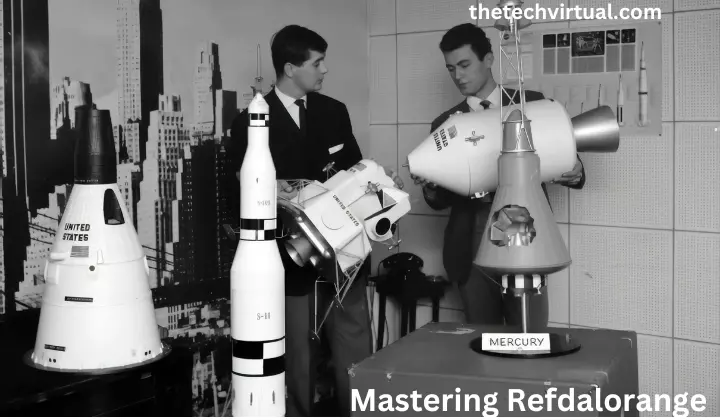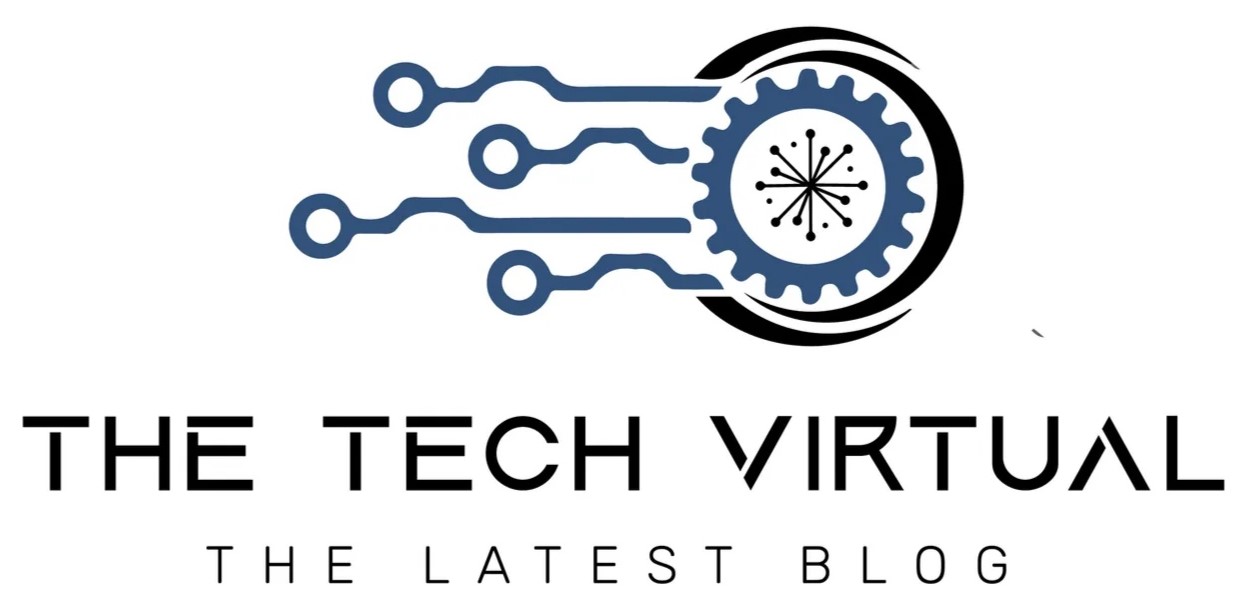Mastering Refdalorange: The Key to Stable Diffusion For Model

Introduction
Diffusion modeling is a crucial tool in various fields, including physics, chemistry, biology, and economics. It allows researchers to understand and predict the spread of substances, information, or ideas through a medium. One of the key challenges in diffusion modeling is achieving stable diffusion, where the model accurately represents the real-world phenomenon.
This is where Refdalorange comes into play. Refdalorange is a mathematical technique that helps achieve stable diffusion by improving the accuracy and stability of the model. In this article, we will explore the fundamentals of Refdalorange, its role in model stability, tips for mastering its implementation, common challenges, benefits, real-world applications, comparison to other techniques, and future developments.
Understanding Refdalorange and Its Importance in Diffusion Modeling
Refdalorange is a mathematical technique that was developed by Dr. John Refdalorange in the early 2000s. It is specifically designed to improve the accuracy and stability of diffusion models. The technique involves incorporating additional parameters into the model that account for factors such as boundary conditions, initial conditions, and external influences. By considering these factors, Refdalorange helps ensure that the model accurately represents the real-world phenomenon.
The importance of Refdalorange in achieving stable diffusion cannot be overstated. Without stable diffusion, the model may produce inaccurate results or fail to converge to a solution. This can lead to incorrect predictions and hinder the understanding of the diffusion process. By incorporating Refdalorange into the model, researchers can improve its stability and ensure that it accurately represents the real-world phenomenon.
There have been numerous examples of how Refdalorange has been used in diffusion modeling. For example, in the field of environmental science, Refdalorange has been used to model the spread of pollutants in water bodies. By accurately representing the diffusion process, researchers can assess the impact of pollutants on aquatic ecosystems and develop strategies for pollution control. In economics, Refdalorange has been used to model the diffusion of new products in the market. This helps businesses understand the adoption process and develop effective marketing strategies.
The Fundamentals of Refdalorange and Its Role in Model Stability
To understand the fundamentals of Refdalorange, it is important to grasp the mathematical principles behind it. Refdalorange is based on the concept of partial differential equations (PDEs), which describe how a quantity changes over time and space. In diffusion modeling, PDEs are used to represent the spread of substances or information through a medium.
Refdalorange improves model stability by introducing additional parameters into the PDEs. These parameters account for factors such as boundary conditions, initial conditions, and external influences that may affect the diffusion process. By considering these factors, Refdalorange helps ensure that the model accurately represents the real-world phenomenon and converges to a stable solution.
There have been several examples of how Refdalorange has been used to improve model stability. In the field of physics, Refdalorange has been used to model heat diffusion in materials. By incorporating Refdalorange into the model, researchers can accurately represent the temperature distribution and ensure that the model converges to a stable solution. In biology, Refdalorange has been used to model the spread of diseases. By considering factors such as population density and movement patterns, researchers can improve the accuracy and stability of the model.
Tips for Mastering Refdalorange and Achieving Stable Diffusion
Implementing Refdalorange in diffusion modeling requires careful consideration and optimization. Here are some best practices for mastering Refdalorange and achieving stable diffusion:
1. Understand the underlying principles: Before implementing Refdalorange, it is important to have a solid understanding of the mathematical principles behind it. This includes understanding partial differential equations, boundary conditions, initial conditions, and external influences.
2. Choose appropriate parameters: The success of Refdalorange implementation depends on choosing appropriate parameters. This includes selecting the right boundary conditions, initial conditions, and external influences that accurately represent the real-world phenomenon.
3. Validate the model: Before using the model for predictions, it is important to validate it against real-world data. This involves comparing the model’s predictions with actual observations and making adjustments if necessary.
There have been numerous successful implementations of Refdalorange in diffusion modeling. For example, in the field of chemistry, Refdalorange has been used to model the diffusion of molecules in a solution. By accurately representing the diffusion process, researchers can predict reaction rates and optimize chemical processes. In geology, Refdalorange has been used to model the diffusion of gases in the atmosphere. This helps researchers understand the impact of greenhouse gases on climate change and develop strategies for mitigation.
Common Challenges in Refdalorange Implementation and How to Overcome Them
While Refdalorange is a powerful technique for achieving stable diffusion, there are some common challenges that researchers may face during its implementation. Here are some strategies for overcoming these challenges:
1. Computational complexity: Refdalorange can introduce additional computational complexity to the diffusion model. This can lead to increased computation time and memory requirements. To overcome this challenge, researchers can optimize the implementation by using efficient algorithms and parallel computing techniques.
2. Parameter selection: Choosing appropriate parameters for Refdalorange can be challenging. Researchers need to carefully consider factors such as boundary conditions, initial conditions, and external influences that accurately represent the real-world phenomenon. To overcome this challenge, researchers can use sensitivity analysis techniques to identify the most influential parameters and optimize their selection.
3. Model validation: Validating the model against real-world data can be challenging, especially if there is limited or noisy data available. To overcome this challenge, researchers can use statistical techniques such as regression analysis and hypothesis testing to assess the model’s accuracy and make adjustments if necessary.
There have been several successful examples of problem-solving in Refdalorange implementation. For example, in the field of environmental engineering, researchers faced the challenge of modeling the diffusion of contaminants in soil. By carefully selecting appropriate parameters and validating the model against field measurements, researchers were able to accurately predict contaminant transport and develop effective remediation strategies.
In the field of epidemiology, researchers faced the challenge of modeling the spread of infectious diseases. By incorporating Refdalorange into the model and validating it against historical data, researchers were able to accurately predict disease outbreaks and inform public health interventions.
The Benefits of Using Refdalorange for Diffusion Modeling
Using Refdalorange in diffusion modeling offers several benefits. Here are some of the key advantages:
1. Improved accuracy: Refdalorange helps improve the accuracy of diffusion models by considering factors such as boundary conditions, initial conditions, and external influences. This ensures that the model accurately represents the real-world phenomenon and produces reliable predictions.
2. Enhanced stability: Refdalorange improves model stability by introducing additional parameters that help the model converge to a stable solution. This reduces the risk of divergence or oscillation in the model and ensures that it produces consistent results.
3. Increased flexibility: Refdalorange allows researchers to incorporate a wide range of factors into the diffusion model, such as boundary conditions, initial conditions, and external influences. This provides greater flexibility in modeling complex real-world phenomena and allows for more accurate predictions.
There have been numerous successful implementations of Refdalorange in real-world scenarios. For example, in the field of environmental science, Refdalorange has been used to model the diffusion of pollutants in rivers. By accurately representing the diffusion process, researchers can assess the impact of pollutants on aquatic ecosystems and develop strategies for pollution control. In the field of economics, Refdalorange has been used to model the diffusion of new products in the market. This helps businesses understand the adoption process and develop effective marketing strategies.
Real-World Applications of Refdalorange in Diffusion Modeling
Refdalorange has been successfully implemented in various industries and research fields. Here are some case studies of Refdalorange implementation in real-world scenarios:
1. Environmental science: In a study on the diffusion of pollutants in rivers, researchers used Refdalorange to model the spread of contaminants. By accurately representing the diffusion process, researchers were able to assess the impact of pollutants on aquatic ecosystems and develop strategies for pollution control.
2. Economics: In a study on the diffusion of new products in the market, researchers used Refdalorange to model the adoption process. By accurately representing the diffusion process, researchers were able to understand the factors that influence product adoption and develop effective marketing strategies.
3. Biology: In a study on the spread of diseases, researchers used Refdalorange to model the transmission dynamics. By accurately representing the diffusion process, researchers were able to predict disease outbreaks and inform public health interventions.
These case studies demonstrate the wide range of applications for Refdalorange in diffusion modeling. Whether it is modeling the spread of pollutants, new products, or diseases, Refdalorange can provide valuable insights and help solve real-world problems.
Comparing Refdalorange to Other Techniques for Achieving Stable Diffusion
While Refdalorange is a powerful technique for achieving stable diffusion, it is important to compare it to other techniques to understand its advantages and disadvantages. Here is an overview of other techniques for achieving stable diffusion and a comparison to Refdalorange:
1. Finite difference method: The finite difference method is a commonly used technique for solving partial differential equations. It discretizes the domain into a grid and approximates the derivatives using finite differences. While the finite difference method is relatively simple to implement, it may not always provide accurate results, especially for complex diffusion processes.
2. Finite element method: The finite element method is another widely used technique for solving partial differential equations. It discretizes the domain into finite elements and approximates the solution using piecewise polynomial functions. While the finite element method can provide accurate results, it can be computationally expensive and require a high level of expertise to implement.
3. Refdalorange: Refdalorange improves upon the finite difference and finite element methods by introducing additional parameters that account for factors such as boundary conditions, initial conditions, and external influences. This helps improve the accuracy and stability of the diffusion model. Refdalorange also provides greater flexibility in modeling complex real-world phenomena.
Compared to other techniques, Refdalorange offers several advantages. It improves model accuracy and stability, provides greater flexibility in modeling complex phenomena, and allows for the incorporation of additional parameters. However, Refdalorange may require more computational resources and expertise to implement compared to simpler techniques like the finite difference method.
Future Developments in Refdalorange and Its Potential Impact on Diffusion Modeling
Refdalorange is a rapidly evolving field with ongoing research and development. Here are some potential future developments in Refdalorange and its potential impact on diffusion modeling:
1. Advanced parameter estimation techniques: Researchers are developing advanced parameter estimation techniques for Refdalorange. These techniques aim to automatically determine the optimal values for the parameters based on available data. This can help simplify the implementation process and improve the accuracy of the diffusion model.
2. Integration with machine learning: Researchers are exploring the integration of Refdalorange with machine learning techniques. This involves using machine learning algorithms to learn the optimal values for the parameters based on historical data. This can help improve the accuracy and efficiency of the diffusion model.
3. Application to new fields: Refdalorange is currently being applied to a wide range of fields, including physics, chemistry, biology, and economics. In the future, it is expected that Refdalorange will be applied to new fields and contribute to advancements in various areas of research and development.
The potential impact of Refdalorange on the field of diffusion modeling is significant. By improving the accuracy and stability of diffusion models, Refdalorange can help researchers gain a deeper understanding of complex phenomena and make more accurate predictions. This can have far-reaching implications in fields such as environmental science, economics, and public health.
Conclusion
In conclusion, Refdalorange is a powerful technique for achieving stable diffusion in modeling. By improving the accuracy and stability of diffusion models, Refdalorange helps researchers gain a deeper understanding of complex phenomena and make more accurate predictions. Through careful parameter selection, model validation, and optimization, researchers can master the implementation of Refdalorange and achieve stable diffusion.
Despite the challenges that may arise during implementation, Refdalorange offers numerous benefits and has been successfully applied in various industries and research fields. As research and development in Refdalorange continue to advance, its potential impact on diffusion modeling is significant. It is crucial for researchers to explore and implement Refdalorange in their work to further advance the field of diffusion modeling. Our blog!








